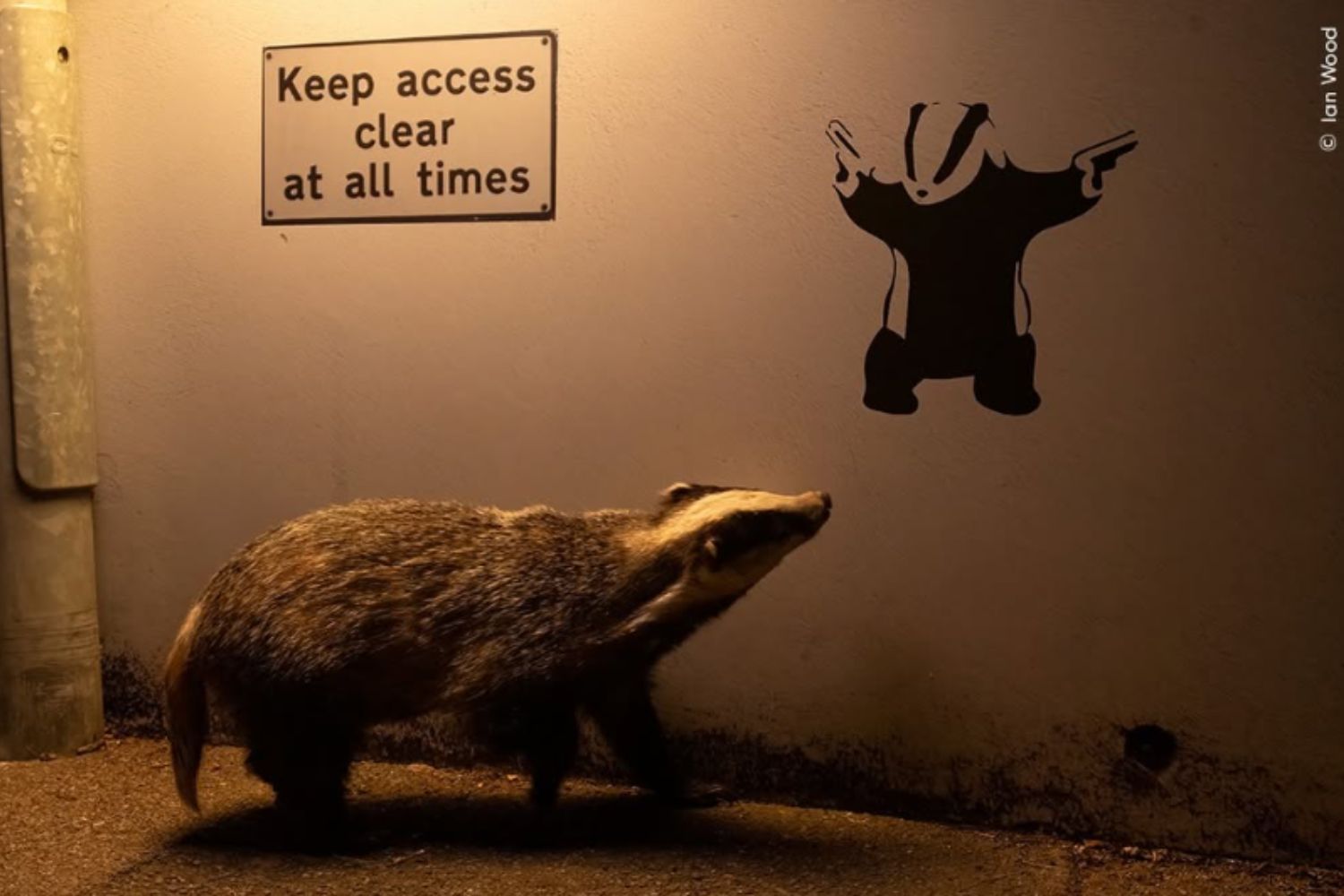Over 76,000 preferences from all over the world, a record for the competition, declared the victory of Ian Wood's shot among the 25 finalist images selected by the Natural History Museum in London. The snapshot combines urban art and nature, with an important message about wildlife

@Ian Wood
An unexpected meeting of street art and wildlife, in a strong and evocative photograph, has captivated the public and claimed the highly prized People’s Choice Award in the Wildlife Photographer of the Year competition.
Taken by British photographer Ian Wood, the winning photograph is entitled No Access. Wood, a wildlife photography enthusiast, had observed that some badgers from a sett near his house were habitually venturing into the residential areas in search of food left outside and put out for foxes.
It was from this observation that the idea of a special scene was formed, merging the urban element of graffiti—very much in the style of Banksy, the well-known British street artist—with the wild presence of the animal. “I spent most of two years photographing them,” Wood told the BBC, “and this particular photo started as an idea.”. I figured it would be a bit of a laugh to put the graffiti there and see if I could get a badger to walk underneath it.
The perfect shot requires patience
To realize his dream, Wood set up a makeshift hide at the roadside, which was illuminated by nothing but a streetlight. Patience, as any wildlife photographer would appreciate, is essential. One night, at last, a badger appeared, ambling along the pavement directly beneath the mural, allowing Wood to capture his perfect image.
The photo quickly resonated with the public, and it went on to gain phenomenal success: more than 76,000 votes from across the globe—a competition record—landed Wood the win among the 25 finalist photos chosen by London’s Natural History Museum.
A powerful message about urban wildlife
Douglas Gurr, the museum director, commended Wood for being able to convey “a special glimpse of the interplay between nature and the human world, highlighting the value of learning about urban wildlife.” He continued, “His exceptional photograph is a compelling reminder that nature and local wildlife, frequently just beyond our doorsteps, have the ability to inspire and engage us.
But for Wood, the image takes on an even more significant meaning, touching on the controversial issue of badger culling, a practice used in England to control bovine tuberculosis but set to be phased out over five years. “I would willingly trade this award in a heartbeat if the government revoked every single badger cull license that is currently operational,” Wood remarked, calling the cull “a national disgrace.”
Online, the five remaining images, from which Wood’s photo of an elk without antlers is chosen, will appear, along with photos of a honey badger pursuing a porcupine, a stoat in the snow, a barn owl in flight, and a volcano erupting through a lenticular cloud, and be online and at the Natural History Museum through the end of June. The exhibit demonstrates the beauty of nature but perhaps more the power of photography for narrative.
This is more than a lovely photograph—it is an invitation to reflect on the coexistence of humans and nature, a subject more relevant and significant than ever.
To see the 5 finalist photos, click here.
